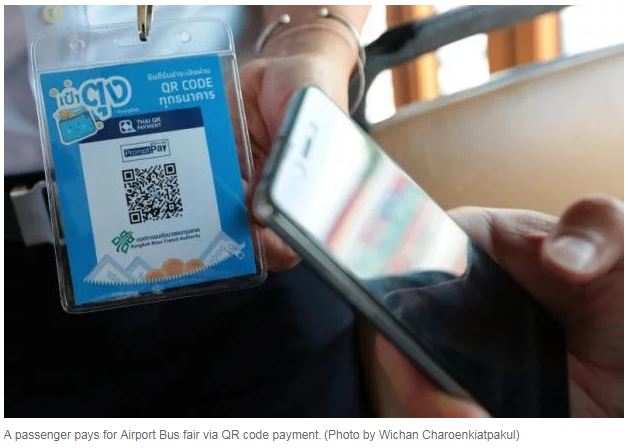Thailand – UnionPay: Online methods catching up with cash usage
Cash is still king for Thai consumers, remaining the top mode of payment, with QR code emerging as the most popular mobile payment method, according to a study by UnionPay International and Nielsen.
“The Future of Payments” is an online survey of 400 mobile payment users in Thailand, including 100 respondents each from Gen Z (aged 18-21), millennials (22-37), Gen X (38-50) and baby boomers (51-65).
Pakee Charoenchanaporn, director of consumer insights at Nielsen Thailand, said 87% of respondents revealed that they use cash to pay, while 75% use QR codes for mobile payments.
The study suggested that Thais have a positive outlook towards a cashless society and would recommend mobile payment to friends and family, he said.
In addition, 71% of respondents said they would like for the country to go cashless, while 61% were confident of living in a completely cashless society.
When asked how long they think it would take for Thailand to go cashless, respondents on average estimated that it would take Thailand about 12 years to go completely cashless.
“As the nation works towards greater inclusivity in the cashless drive, 91% would take the initiative to teach their family, friends and colleagues to use mobile payments,” Mr Pakee said.
Vincent Ling, deputy general manager of UnionPay International, said the use of mobile payments is clearly on the rise among Thai consumers.
He said efforts from various actors, including the government, financial institutions, payment networks and merchants, to drive mobile payments have significantly raised public awareness and increased mobile payment adoptions.
“More than half of respondents (53%) have used smartphones or tablets to conduct financial transactions in the past three months,” he said. “Mobile payment users in Thailand used on average three mobile payment platforms in the past three months.”
Mr Ling said the journey towards a cashless society will not happen overnight. Limited merchant acceptance and offerings are one of the key factors deterring consumers from adopting QR code payment.
QR code payments play an important role in enabling a more inclusive cashless society, as this form of payment lets consumers and merchants adopt the platform easily without the need for costly devices or infrastructure.
UnionPay QR code, based on the EMVCo global standard, is interoperable across 10 million merchants in 24 markets globally. Consumers can use QR code payment with a single app, Mr Ling said.
“We believe that with the collective steps taken by the key stakeholders and industry players, we can expedite the process of going cashless to less than 12 years,” he said.
Source: https://www.bangkokpost.com/business/news/1586510/unionpay-online-methods-catching-up-with-cash-usage


 English
English




